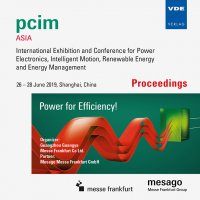Research on SiC MOSFET Application in 1MW PV Inverter
Conference: PCIM Asia 2019 - International Exhibition and Conference for Power Electronics, Intelligent Motion, Renewable Energy and Energy Management
06/26/2019 - 06/28/2019 at Shanghai, China
Proceedings: PCIM Asia 2019
Pages: 5Language: englishTyp: PDF
Personal VDE Members are entitled to a 10% discount on this title
Authors:
Hu, Bo; Ma, Xiankui; Song, Gaosheng (Mitsubishi Electric & Electronics (Shanghai) Co., Ltd, China)
Abstract:
As we all know, for electrical systems, after long term development, the performance of silicone modules has been close to its theoretical limitations in many aspects, and there is not much room for further improvement through innovation. In recent years, the third-generation semiconductor technology develops rapidly, represented by SiC (Silicone Carbide). Compared with Si materials, SiC semiconductor materials have characteristics of wide band gap, high electric breakdown field and high thermal conductivity. The power device based on SiC semiconductor material has the advantages of low on-state resistance, low switching loss and low thermal resistance, so SiC power modules is more suitable for the application of high frequency, high temperature, and high efficiency. As the key components of photovoltaic grid-connected inverters, power devices play a crucial role in topology design and machine performance. In order to verify the advantages of SiC power modules, we take DC1500V 3-level NPC 1MW photovoltaic inverter as an example.


